TN Ninan
One of the big-ticket issues likely to find mention in the finance minister's speech was food security. "Food" in this context has been treated as synonymous with foodgrain, because the draft Bill on the subject mentions only cereals, though foodgrain now accounts for only a third of "agriculture and allied activities".
Perhaps this thinking reflects path dependency -the Dravida Munnetra Kazhagam (DMK) swept the state elections in Tamil Nadu in 1967 by promising rice at a rupee a measure (roughly one kilogram).
The promise was never implemented outside of the capital city of Madras (now Chennai), because the state government couldn't afford the subsidy bill. But N T Rama Rao (NTR) in neighbouring Andhra Pradesh was watching.
Union Budget 2012-13: Complete coverage...
Budget 2012: What is missing from the food security Bill?
Shortly after he launched his Telugu Desam, he rode to power in 1984 by promising rice at Rs 2 per kg (a doubling of the price in the 17 years since the DMK promise).
Now, 28 years later, the government at the Centre wants to increase that price by another rupee, to Rs 3 per kg, while providing wheat at Rs 2. Sonia Gandhi, it would seem, hopes to repeat the DMK's performance in 1967 and NTR's in 1984, and ride to electoral victory in 2014 by promising cheap bread.
But a lot of things change in 30 years, including food habits and broader consumption patterns. Back in 1971, when poverty estimates were first formalised, the poverty line was Rs 20 per head per month.
Union Budget 2012-13: Complete coverage...
Budget 2012: What is missing from the food security Bill?
A person situated on that poverty line, if she consumed 13 kg of rice in a month (a quantity that matched the per capita grain availability of 400-450 grams per day), would have used up most of that Rs 20 for buying rice. Indeed, that was the basis for fixing the poverty line.
Today's picture could not be more different. The poverty line was set last year at Rs 29 per head per day (taking an average for village and city). That's Rs 870 per month - compared to Rs 20 per month 40 years earlier.
The same 13 kg of rice, bought in the open market, would have cost Rs 286 (at Rs 22 per kg) - accounting now for only a third of the monthly expenditure of a person on the poverty line, and thereby leaving two-thirds of her money for other items of consumption. That's a big change from 1971, when there was no such surplus.
Union Budget 2012-13: Complete coverage...
Budget 2012: What is missing from the food security Bill?
What does the extra money get spent on? You could guess by looking at non-cereals - onions and potatoes, sugar and cooking oil, milk and eggs, meat and fish, and fruits and vegetables.
All of these have seen dramatic growth. Between 1971 and 2011 - a period during which the per capita availability of cereals remained virtually constant - the per capita availability of edible oils shot up from 4.1 kg to 14.3 kg, that of sugar from 6.8 kg to 18.6 kg, and of tea/coffee from 488 grams to roughly 765 grams.
Or look at onions. Older readers will recall that 1980 was the year in which Indira Gandhi stormed back to power by pointing to the price of onions (Rs 5 per kg then). Well, onion production in the year that followed (1980-81) was 2.5 million tonnes.
Union Budget 2012-13: Complete coverage...
Budget 2012: What is missing from the food security Bill?
Photographs: Mukesh Gupta/Reuters
Thirty years later, it was almost six times as much, at 14.8 million tonnes - despite which onion prices were still an issue! Potato production in the same period quadrupled, from 9.67 million tonnes to 39.66 million tonnes.
In a 30-year period when the population roughly doubled, per capita consumption had doubled for potatoes, and nearly trebled for onions - broadly mirroring the increase in per capita consumption of edible oils and sugar.
This story has been repeated in milk, eggs, fish and meat. Overall, horticulture production (fruits, vegetables and spices, apart from flowers) went up from 192 million tonnes to 231 million tonnes in just four years, from 2006-07 to 2010-11.
Union Budget 2012-13: Complete coverage...
Budget 2012: What is missing from the food security Bill?
By way of contrast, it took 13 years (from 1994-95 to 2007-08) for foodgrain production to move up from the same 192 million tonnes to 231 million tonnes. The day is not far off when horticulture will overtake foodgrain in total tonnage.
The point is a simple one. Grain is still the staple, but it is no longer the predominant item of cost in the food basket. Eating habits have diversified to take in a range of other food items.
This would obviously be less in the case of the poor than for the better-off, but the numbers on poverty-level income and the cost of cereals suggests that even the poor have the cushion to eat other foods.
Union Budget 2012-13: Complete coverage...
Budget 2012: What is missing from the food security Bill?
Photographs: Reuters
The change in consumption patterns is reflected in the findings of the National Sample Survey. Between 1987-88 and 2009-10, the share of cereals in total consumption expenditure came down in the rural areas from 26.3 per cent to 15.6 per cent, and in the urban areas from 15 per cent to 9.1 per cent.
Non-cereal foods accounted in 2009-10 for two to three times the expenditure on cereals. Despite that, the share of food items as a whole in the consumption basket dropped.
So when the government focuses on cereals as the heart and soul of food security, it lives in an age that has gone. This is no longer the India of 1967 or 1984, which coincidentally marked the Indira Gandhi era.
Union Budget 2012-13: Complete coverage...
Budget 2012: What is missing from the food security Bill?
Photographs: Rupak De Chowdhuri/Reuters
One simply has to look at the recent controversies over food prices to see that all the noise is about non-cereals: onions, fruits, vegetables... Admittedly, the noise in the media would reflect an urban, middle-class bias, but the fact is that the public procurement and distribution system has kept a leash on cereal prices, which are less volatile and also have gone up less than the other food items.
Some NGOs that have been campaigning for food security have seen the relative decline in the importance of cereals, and have demanded that the food security promise go beyond cereals.
But that runs up against the perishability of most non-cereal food, which therefore militates against a nationwide public distribution project.
Union Budget 2012-13: Complete coverage...
Budget 2012: What is missing from the food security Bill?
The obvious solution, to deal with the cereal/non-cereal issue, would be a cash transfer scheme. But providing Rs 500 per family per month (the equivalent of a subsidy of Rs 15 per kg of grain, and Rs 35 kg of grain per family per month) sounds less dramatic than promising virtually-free grain.
Targeting vulnerable households would also be easier with cash transfers, and the overheads and leakage virtually nil. At the very least, pilot programmes should test the hypothesis.
A cash programme, without the emotive value attached to food supply, may not deliver the political dividends that the DMK and NTR harvested in times gone by.
But then, given the reduced role of cereals, such a political pay-off may not be available in any case. So if Pranab Mukherjee can brave himself to go down "the road less travelled", he would do the country a massive favour.
Union Budget 2012-13: Complete coverage
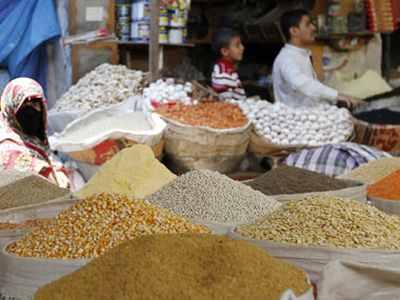
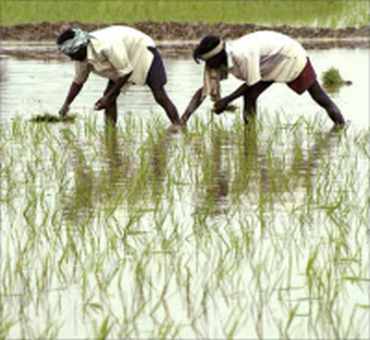
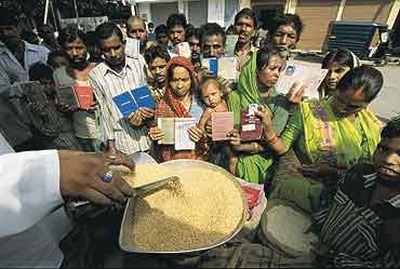
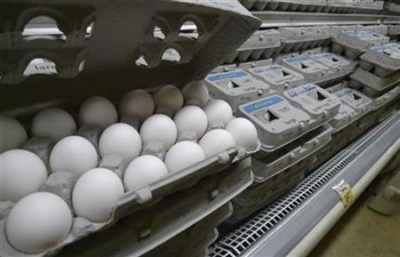
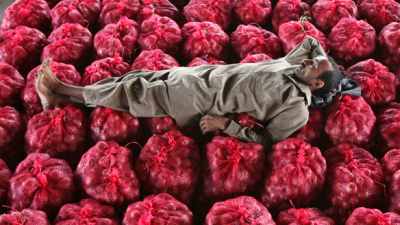
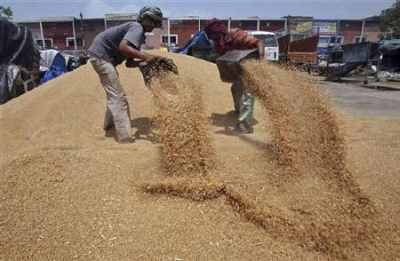

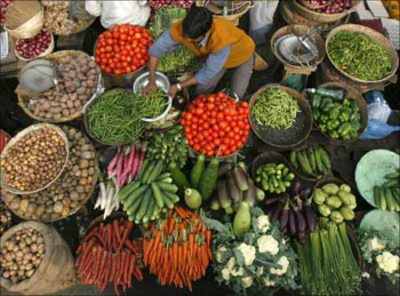


article